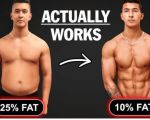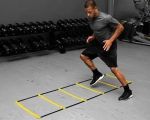Mastering the Art of Tracking Your Fitness Progress
When I first started my fitness journey, I had no idea how to track my progress properly. I would go to the gym, follow my workouts, and feel good afterward, but I had no real measure of my improvement. Over time, I learned that tracking your fitness progress is not just about stepping on the scale every now and then. It’s about observing various aspects of your health and performance, tracking them, and adjusting as needed to reach your goals. If you’re like me and want to improve your fitness while staying motivated, here’s everything I’ve learned on how to track your fitness progress effectively.
1. Set Clear, Achievable Fitness Goals
The first step in tracking your fitness progress is setting clear, achievable goals. It’s easy to get excited about fitness and say, “I want to lose weight” or “I want to get stronger,” but goals like these can be vague and hard to measure. Instead, break them down into smaller, specific goals. For example:
- Lose 10 pounds in 2 months
- Increase my deadlift by 20 pounds in 6 weeks
- Run 5K in under 30 minutes within 3 months
Having these types of clear, measurable goals makes it easier to track your progress over time and adjust your workouts accordingly. I recommend using the SMART goal framework—Specific, Measurable, Achievable, Relevant, and Time-bound—to make sure you’re on the right track.
2. Track Your Performance with Fitness Apps
There’s no shortage of apps designed to help you track your fitness progress, and many of them are incredibly easy to use. Whether you’re looking to track your workouts, meals, or even your heart rate, these apps can give you detailed insights into how well you’re progressing. Some of my favorites include:
- MyFitnessPal – Perfect for tracking your calories, macronutrients, and food intake.
- Strava – Ideal for runners, cyclists, and athletes who want to track their times and performance.
- Fitbod – Great for strength training, as it suggests personalized workouts based on your progress.
- Garmin Connect – Best for people with fitness trackers, it syncs with Garmin devices to monitor progress over time.
By recording your workouts and meals, you can analyze trends and see how your body responds to different exercises and nutrition plans. For instance, when I started using MyFitnessPal, I was shocked to see how many calories I was eating in a day. It helped me adjust my diet for better results.
3. Measure Your Body with Multiple Metrics
Tracking your fitness isn’t just about weight loss. Your weight can fluctuate due to many factors like hydration, muscle mass, or hormonal changes. Instead, take a holistic approach and track other metrics that reflect your health progress. Here are some of the most effective metrics to keep track of:
- Body measurements – Track waist, hips, chest, arms, and thighs. Muscle growth and fat loss are better reflected by changes in these measurements.
- Body fat percentage – This is a far more accurate measurement of your fitness than just your weight. I personally track my body fat percentage using a bioelectrical impedance scale.
- Strength progress – Keep a record of how much you’re lifting in the gym and aim for gradual increases in weight.
- Endurance levels – For runners or cyclists, tracking improvements in distance and speed is key. Whether you’re running, swimming, or biking, it’s all about pushing yourself a little further each time.
By tracking a combination of metrics, I’ve been able to get a more accurate picture of my overall progress. For example, I noticed that even though my weight wasn’t dropping quickly, my measurements were showing fat loss and muscle gain. That was a huge motivation booster for me!
4. Use Progress Photos
One of the simplest and most powerful ways to track your fitness progress is through progress photos. While it may be tempting to jump on the scale every day, progress photos give you a visual representation of your transformation. Every few weeks, I take a full-body picture from the front, side, and back. I make sure I’m wearing the same clothes and standing in the same position each time for consistency. Looking back at these photos is incredibly motivating, and it really shows the difference my efforts have made over time.
5. Listen to Your Body and Adapt
As you track your progress, it’s important to listen to your body. If you’re feeling sore, fatigued, or injured, it might be a sign to adjust your training routine. Fitness is not about pushing yourself beyond your limits every single day. It’s about gradual, sustainable progress. If I ever feel a plateau coming on, I change my workouts by switching exercises, increasing reps, or even taking a few days off to let my body recover.
Also, don’t forget about recovery! It’s just as important as the workouts themselves. Tracking your progress also means being aware of how well you’re resting and recovering. Adequate sleep, proper nutrition, and hydration are key components of fitness.
6. Stay Motivated with Milestones and Rewards
Staying motivated on your fitness journey can be tough, especially if you don’t see immediate results. That’s why setting mini-milestones along the way is so important. For example, after hitting a certain number of workouts or achieving a specific weight loss goal, treat yourself with something that motivates you, like new workout gear, a massage, or a fun activity. This keeps you focused and excited to continue.
For me, completing a challenging workout or hitting a new personal best is always followed by a small reward. It keeps the journey enjoyable and prevents burnout.
7. Use Wearable Technology for Detailed Insights
Wearable technology, such as fitness trackers and smartwatches, has completely revolutionized the way we track our fitness. These devices can track a variety of metrics, such as:
- Heart rate
- Steps taken
- Calories burned
- Sleep patterns
Using a fitness tracker has helped me track my sleep, which is a huge factor in recovery. By ensuring that I’m getting quality rest, I’ve been able to optimize my workouts. Moreover, these devices sync with apps on your phone, so you can easily access and analyze your data in one place.
In conclusion, tracking your fitness progress effectively requires more than just focusing on weight. By measuring your performance, tracking body metrics, taking progress photos, using fitness apps and wearables, and staying motivated with rewards, you can ensure that your efforts lead to long-term success. Embrace the journey, celebrate your wins, and most importantly, enjoy the process!








